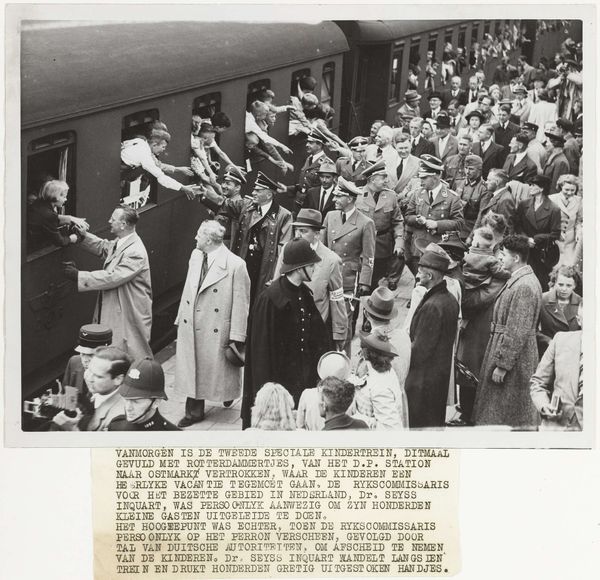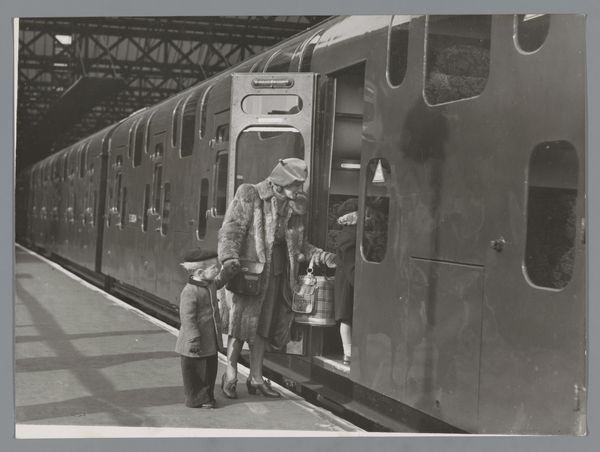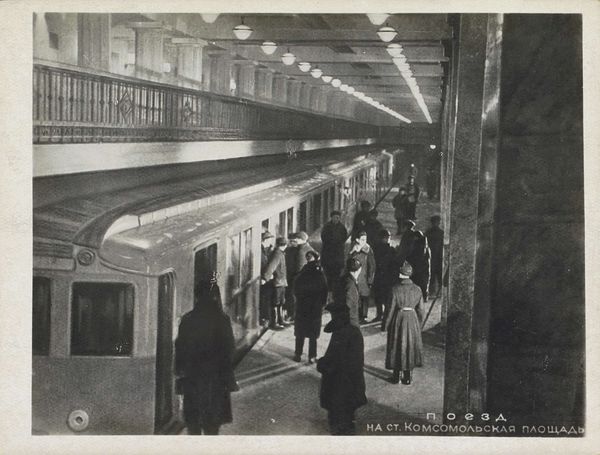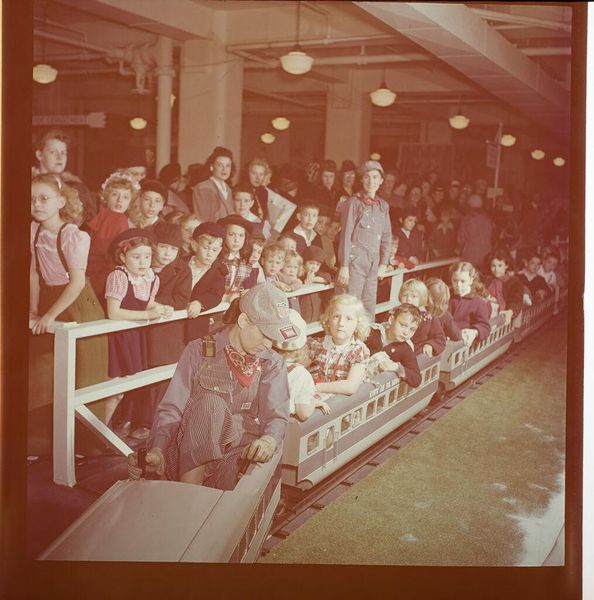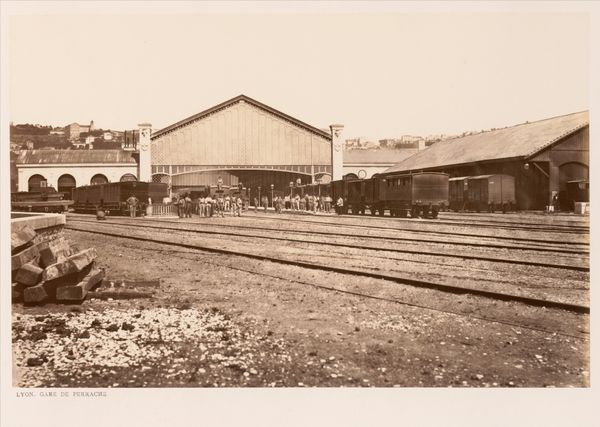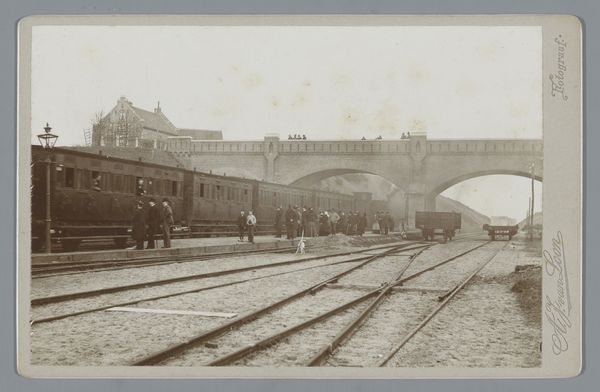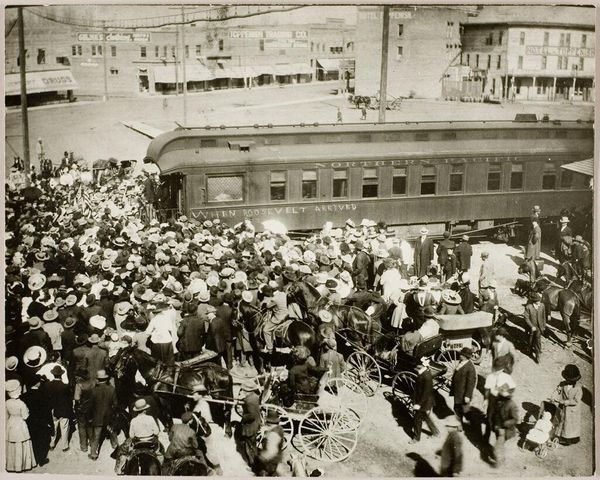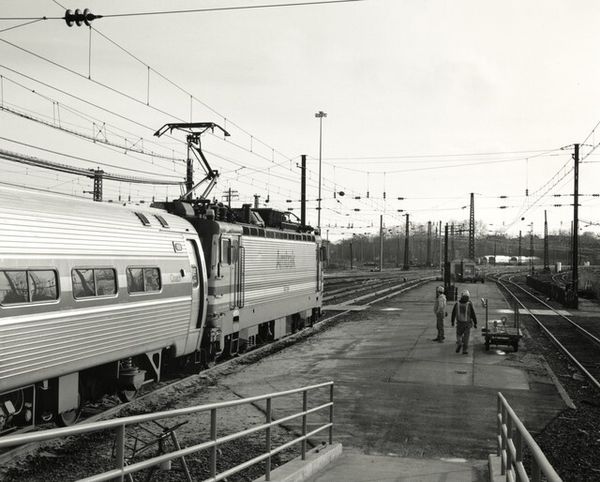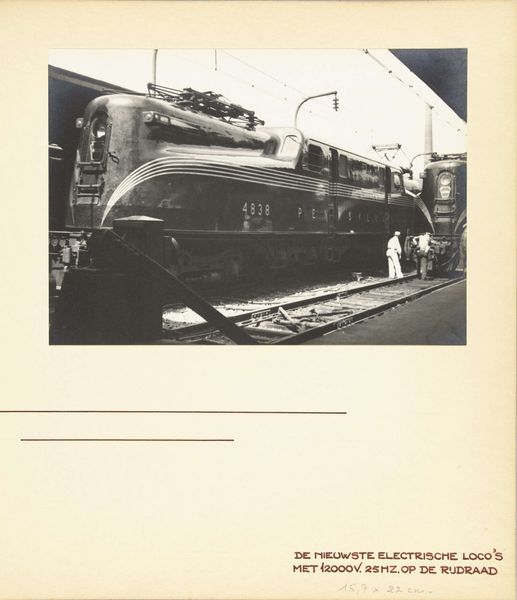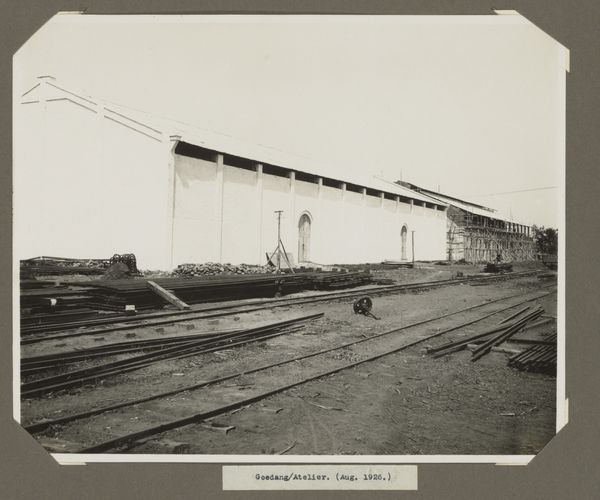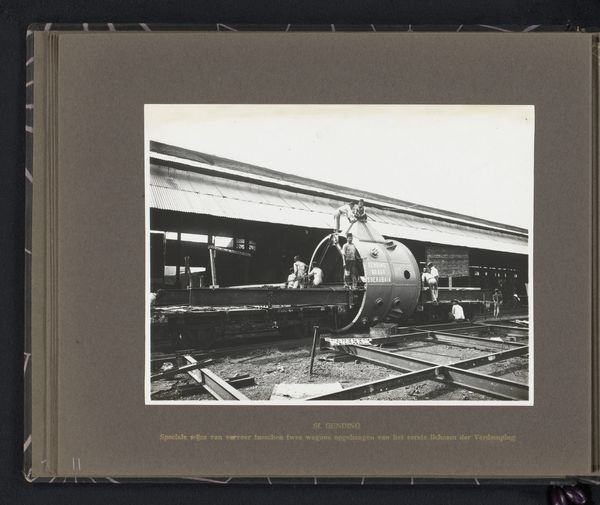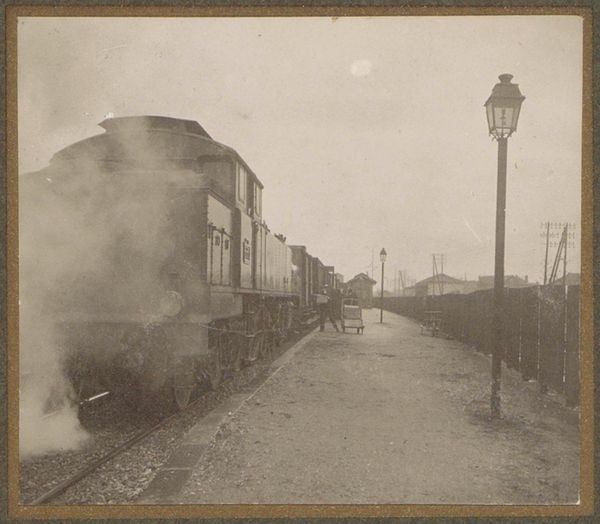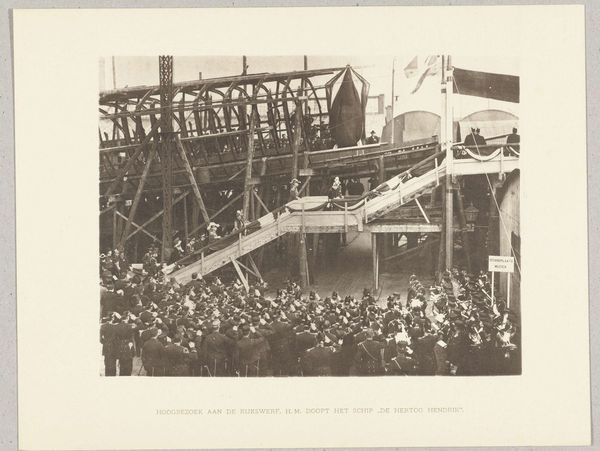
photography, gelatin-silver-print
#
landscape
#
photography
#
historical photography
#
gelatin-silver-print
#
genre-painting
Copyright: Rijks Museum: Open Domain
Editor: Here we have a gelatin-silver print titled "Departure of Rotterdam Children to the 'Ostmark'," potentially taken between 1940 and 1947. The photograph features a crowded train platform. I'm struck by the stark contrast and the sheer density of people; it feels claustrophobic, almost. What stands out to you in terms of its visual construction? Curator: Immediately, one is drawn to the interplay of light and shadow across the composition. The photograph’s grayscale palette emphasizes the textural contrasts—the smoothness of the train cars against the rough textures of the crowd's clothing. The structural arrangement is particularly compelling: note the lines created by the train receding into the distance, countered by the verticality of the architectural supports above the platform. Editor: I hadn’t thought about the architecture adding to the photograph’s impact. Is the contrast between the static architecture and the dynamic crowd important? Curator: Precisely. The arches, acting as a rigid framework, emphasize the fluid mass of people. Semiotically, we might interpret this tension as representing the societal constraints imposed upon individual movement, particularly during wartime. The light, streaming in from the side, illuminates the crowd irregularly, highlighting certain figures and obscuring others. Is there any element that guides your eyes? Editor: I keep returning to the faces peering out from the train windows. There is this really strong framing element created by the dark openings contrasting the people on the platform. It gives such a unique perspective to the artwork. Curator: Exactly. That framed view highlights their anticipation or apprehension of whatever will occur when the train moves and the viewing stops being an option. This simple effect encourages our examination of composition and presentation within the whole image. Editor: It's interesting how analyzing the structure makes you focus less on what is happening in the scene itself and more on how it is displayed. Thanks for offering your viewpoint! Curator: The photograph becomes not merely a historical record, but also a meticulously constructed artistic statement, an intricate balance of form and content.
Comments
No comments
Be the first to comment and join the conversation on the ultimate creative platform.
